Citizen Science: How a Hobby Can Support Science
Feeding birds in the United States was nearly a $5 billion market in 2012 according to Feeding Wild Birds in America. Millions across the United States and the world feed birds. For the past 30 years researchers have been gleaning data from bird feeding enthusiasts to study bird populations.
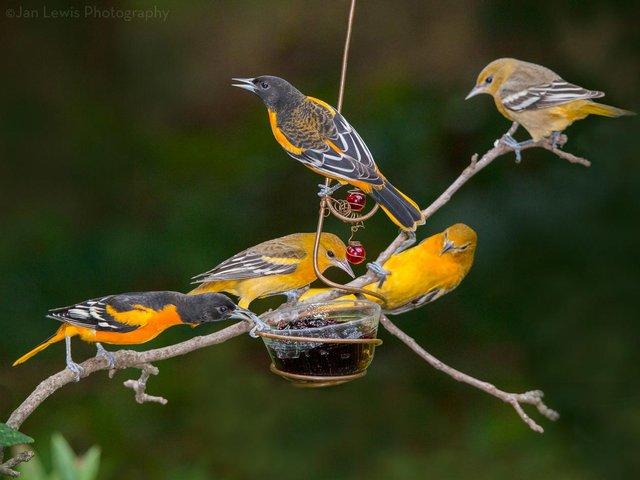
Image Source
Hobby of Feeding Wild Birds
People have been throwing food scraps outside for a very long time. Birds and other animals find the food scraps while foraging for a meal.
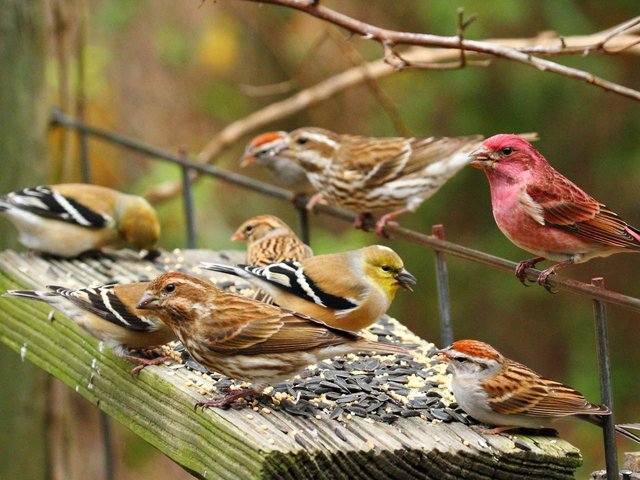
Image Source
In 1889 Florence A. Merriam wrote a popular field guide "Birds Through an Opera-Glass" which promoted the use of modern bird feeders. Bird feeding spread across most of the United States by the mid-1890's. However it would take about a hundred years until year-round bird feeding was common.
In 2012 American hobbyists spent $4 billion on bird feed and another $970 million on feeders and other accessories associated with the hobby of bird watching and feeding.
Bird feeding is one of the most intimate, immediate kinds of interaction you can have with nature and with other living creatures.
The author of "The Birds at My Table" reminds bird feeding hobbyists to maintain a healthy experience for the birds you are feeding. To prevent the transmission of disease the bird feeders need to be cleaned periodically. Keep in mind you are inviting birds to feast at your bird feeders.
Hobbyist Contribute to Scientific Research
Since 1987 backyard bird feeding hobbyists have contributed to Project FeederWatch, a citizen science project in Canada and the United States, supporting
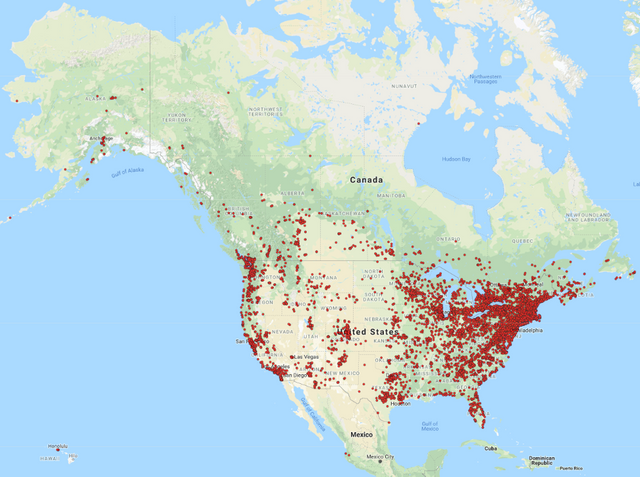
2018-2019 Participants
Researchers analyze the data provided by 15,000 participants to identify trends in behaviour and bird populations. Here are some of their findings from the first 25 years of Project FeederWatch data collection and analysis.
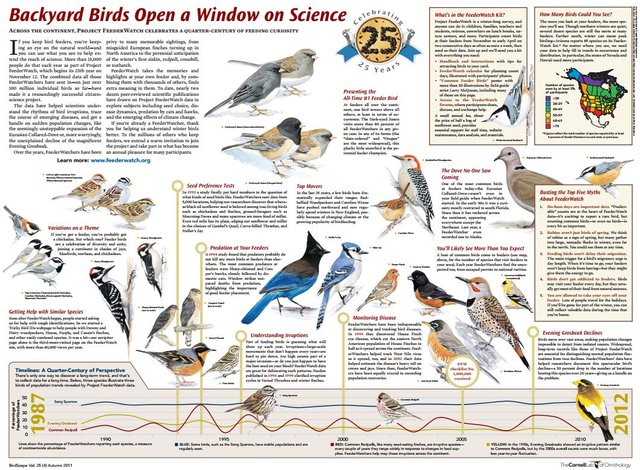
Image Source
After 30 years of analyzing the data provided by citizen scientists the researchers at the Cornell Lab of Ornithology and Bird Studies Canada are learning how bird populations and bird migration patterns are changing.
Northern Cardinals
Since 1989 the range of Northern Cardinals has expanded further north into the upper Midwest, northern New England, and southeastern Canada as well as further into the Southwestern United States.
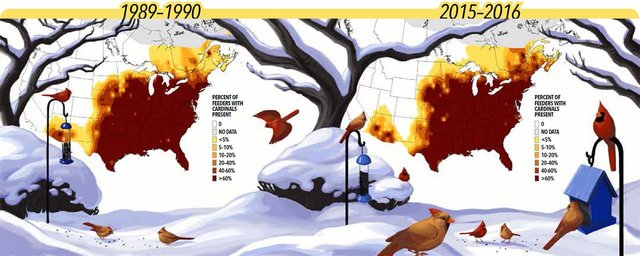
Image Source
Evening Grosbeak
Over the past six years, observations provided by citizen scientists have shown that winter range of Evening Grosbeaks has disappeared in much of the East and dwindled in the West.
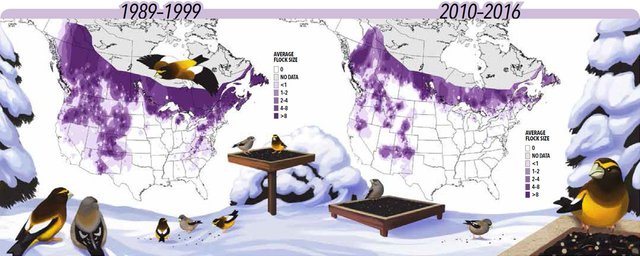
Image Source
Cooper's Hawk
In the past many Cooper's Hawks migrate to Mexico during the winter. In recent years, citizen scientists observations have shown that Cooper's Hawks are regularly observed in backyards and urban habitats much farther north during the winter.
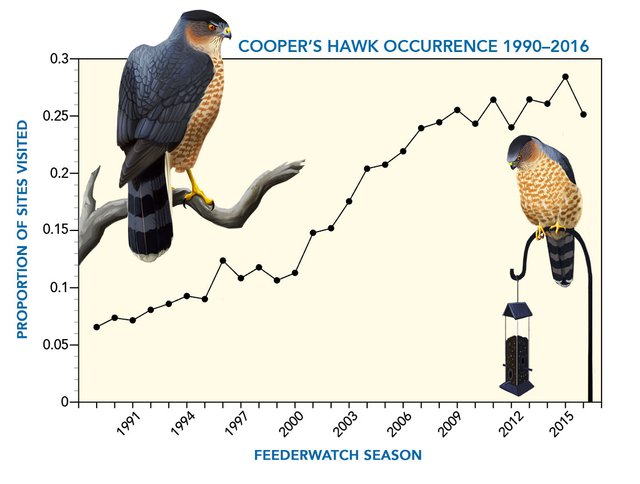
Image Source
Eurasian Collared-Doves
Eurasian Collared-Doves are native to India, Sri Lanka, and Myanmar. In the mid-1970's about 50 birds were released from a pet shop in the Bahamas. Since then the range of the Eurasian Collared-Doves has expanded northwest across the United States and into Canada.
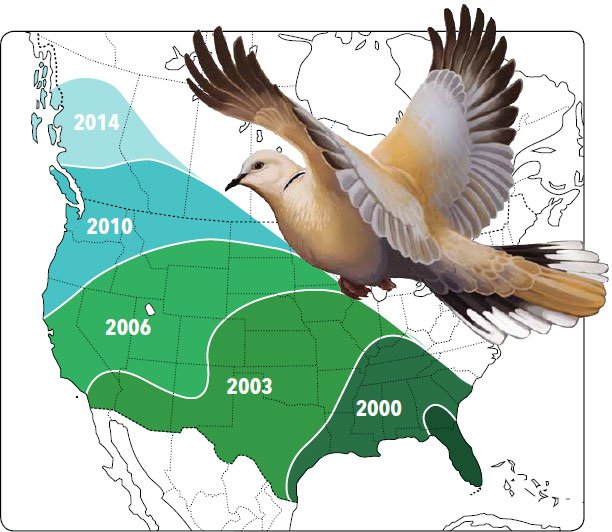
Image Source
Anna's Hummingbird
Over the past several decades data from citizen scientists has demonstrated the dramatic range expansion of Anna's Hummingbirds north along the Pacific Coast.
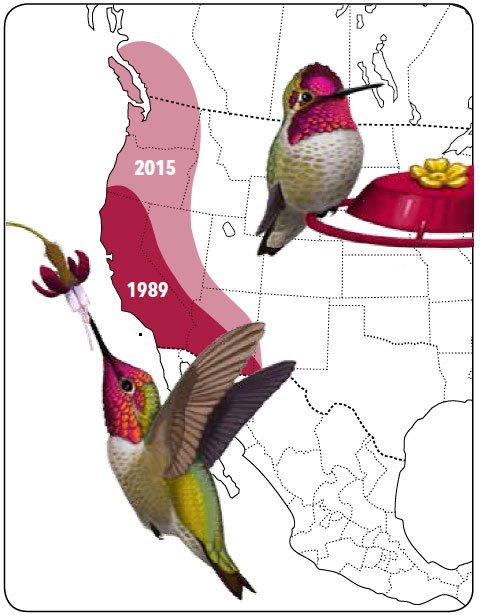
Image Source
Are You Ready Contribute Your Observations?
Citizen scientists in the USA and Canada can join Project FeederWatch here. International citizen scientists can join eBird.
Sources
Why Do We Feed Birds—And Should We? A Q&A With The Experts, Pat Leonard and Darien Fiorino, All About Birds, 18 December 2018
Feeding Wild Birds in America: Culture, Commerce, and Conservation, Paul J. Baicich, Margaret A. Barker, and Carrol L. Henderson, Texas A&M University Press, 30 March 2015
Birds Through an Opera-Glass, Florence A. Merriam, The Chautauqua Press, 1889
Birds Through an Opera-Glass (Classic Reprint), Florence A. Merriam, Forgotten Books, 19 April 2018
The Birds at My Table: Why We Feed Wild Birds and Why It Matters, Darryl Jones, Comstock Publishing Associates, 1st Ed., 15 March 2018
Backyard Birds Open A Window On Science Through 25 Years Of Project FeederWatch, 15 October 2011
Project FeederWatch here -- United States and Canada
eBird -- World-wide
Thank You!
Thank you!
Totally agree with you, the population of birds directly depends on our participation in this!
You are right, you need to get involved in birds, as this contributes to their population!
Oh yes @etcmike, the fascination with birds is a very interesting activity and useful for the birds themselves!
Excellent review, my friend, and only on our attention to the problems of birds, will depend on existence! Thank you @etcmike
Beautiful bird
Posted using Partiko Android
Thanks sir sharing this beautiful project.
Posted using Partiko Android
This post has been voted on by the SteemSTEM curation team and voting trail in collaboration with @curie.
If you appreciate the work we are doing then consider voting both projects for witness by selecting stem.witness and curie!
For additional information please join us on the SteemSTEM discord and to get to know the rest of the community!
hi @etcmike.
In Venezuela, our vegetation provides multiple forms of alimony for birds. However, the incorporation of non-native trees, such as "neem" which has a fruit that is not edible for them. it drives them away. But the initiative to care for and protect the birds is great. I wish many could replicate it.
Realy beautiful topic and this post is awesome
Beautiful 🌄